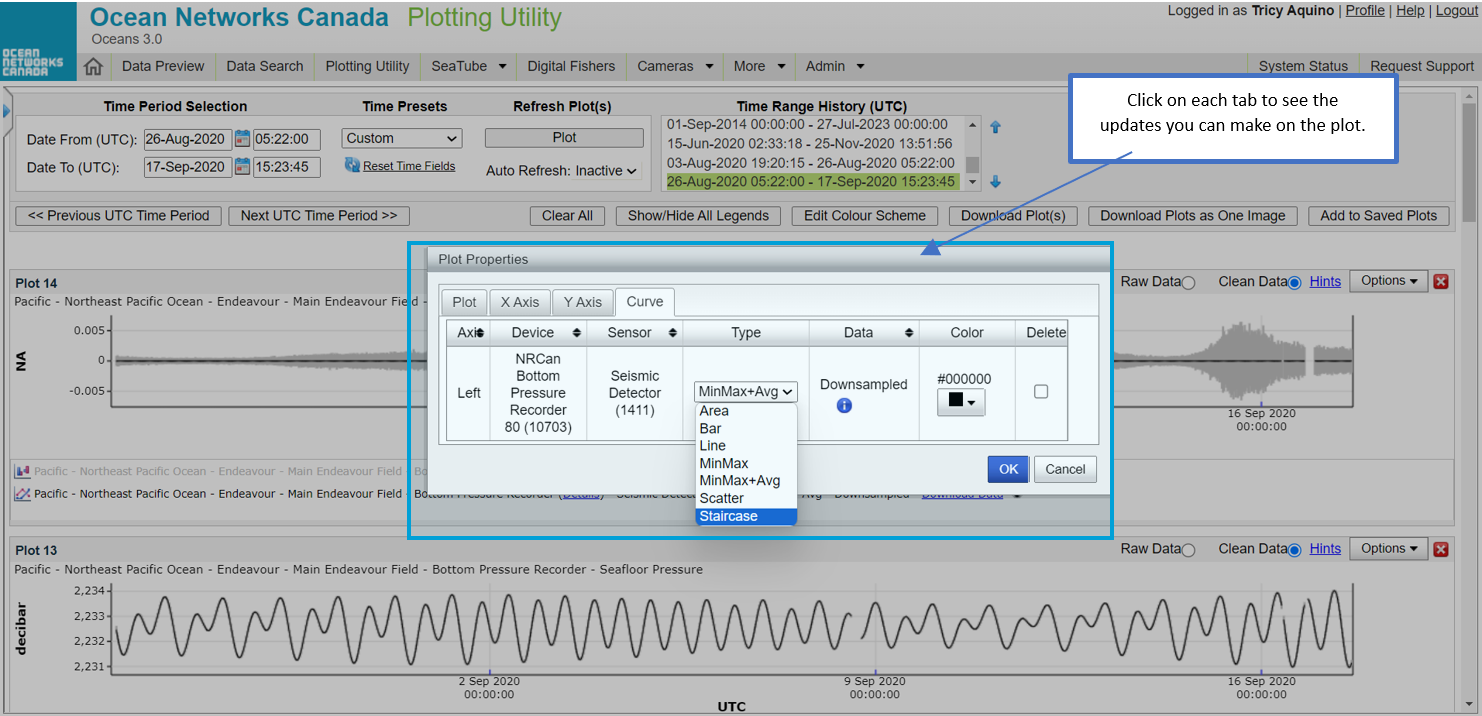What is it?
Plotting Utility is an interactive plotting tool. Use it when you want to interact with your scalar data; zoom in, change from Min/Max to Min/Max+Avg or other plotting options, or stack multiple sensors in the same timeline. You can change from line charts to bar charts, filled area, and multiple Y-axis plots.
Why is this useful?
It's convenient (no downloads or specialized software required) and with an Oceans 3.0 account you can save your plots to your personal folder and share them with colleagues.
Saved Plots Tab - these are examples of plots saved and available publicly.
Register an Oceans 3.0 account & get more features
Personal history - remember searches, save plots, create annotations.
Share: send plots to colleagues and friends.
Community: join research working groups, share ideas for experiments and data analysis.
Plotting utility is arranged into three panes: on the left is the navigation and filter pane, on the top right is the time selection and plot history, and the bottom right is where plots appear. (click to enlarge)
Try opening some saved public plots; there's some interesting stuff you can view and interact with. You can also choose data by date, and optionally autorefresh to watch live data streaming.
You can choose multiple properties to plot at the same or different location and do some simple comparison.
The selected sensor is overlaid on the previous plot. You can access plot properties in the option drop-down.
Click on the hide/show controller to hide the navigation pane and maximize plot size.
Quality Assurance Quality Control is a process that flags all the data being collected by the instruments. This allows the system to identify the raw and clean data available in the database:
Raw data - populates the data collected without any modification.
Clean data - populates the data excluding those flagged with quality control failures.
Plot properties allow you to do a more detailed update on the plot you are working on. Each tab contains field that you can manipulate.
The Curve tab gives you an option to choose different plot types and change the color.
Colour Scheme functionality allows the users to build their own schemes or use the preset schemes available. The default ones are designed to accommodate 3 different types of colour-blindness: protanopia, deuteranopia, and tritanopia.
The default colours on each curve can also be edited by clicking on the colour block and choosing the desired colour. After the colours are updated, click the save button to apply the changes.
Only users logged in have the ability to edit the colour scheme.








